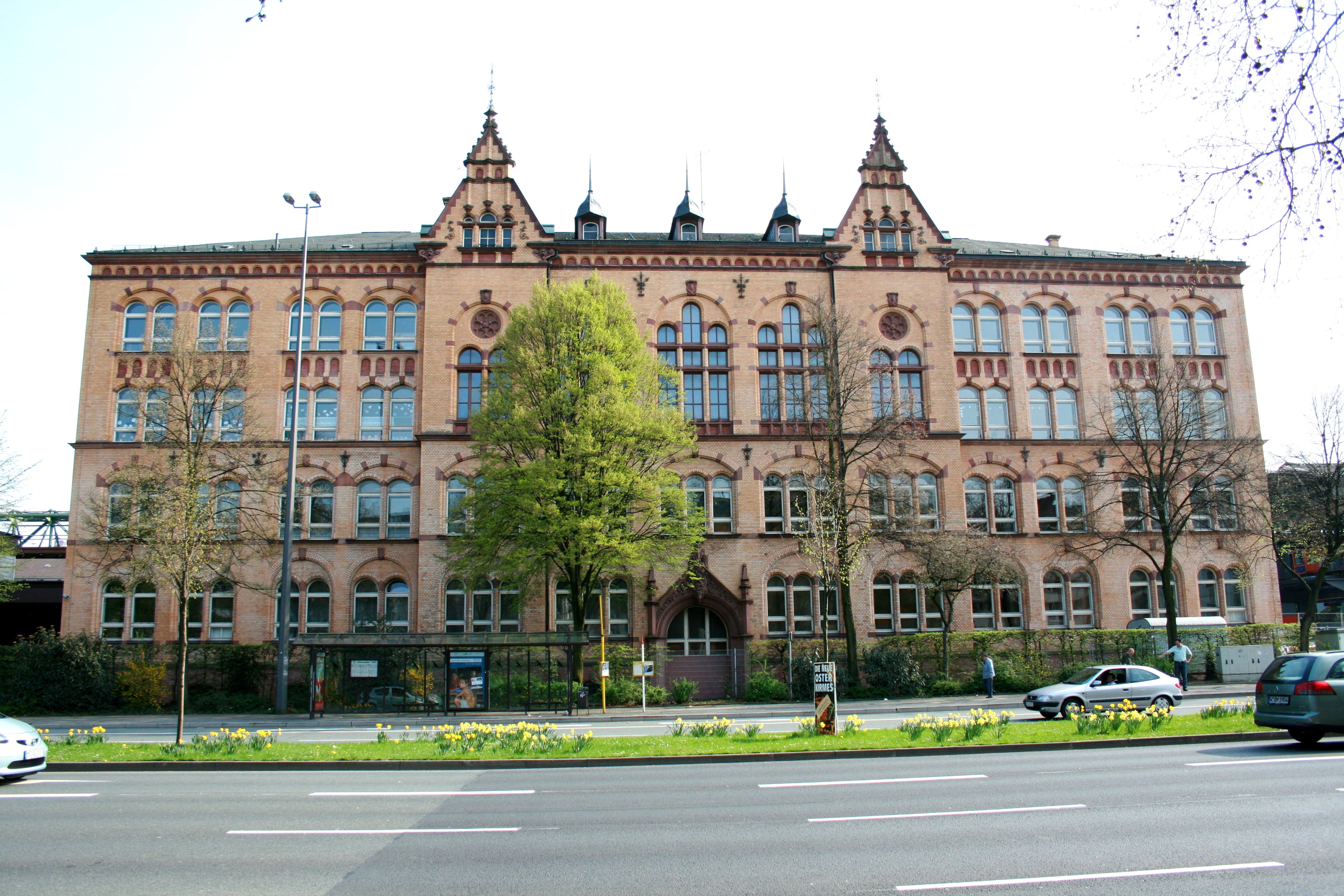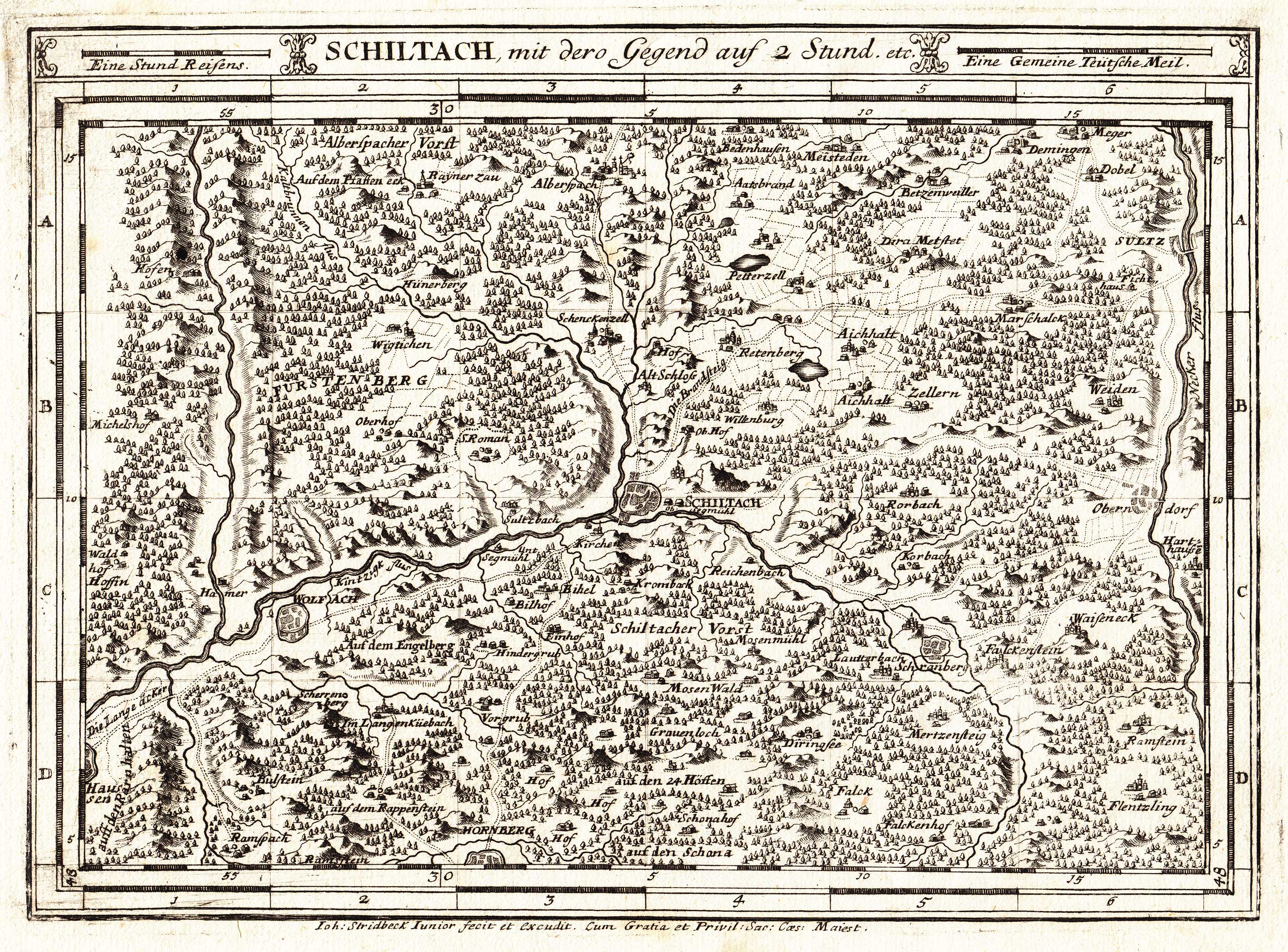|
Lauterbach, Baden-Württemberg
Lauterbach () is a village and municipality in the Rottweil (district), district of Rottweil in Baden-Württemberg. Lauterbach is located in the Black Forest near Schramberg, and is known as a tourist resort. Neighbouring towns and municipalities The following towns and municipalities border on Lauterbach (clockwise, from N to W):Wolfach, Schiltach, Schramberg and Hornberg Land use Lauterbach's total area of 19.95 km2 is covered by forest (55%) and is agricultural fields (37%), the rest (8%) is built-up area and roads. Since Lauterbach is embedded into the narrow valley of the Lauterbach River there is not much space for erecting residential homes or industrial buildings. Residential expansion – although rather limited – is only possible in the outskirts. History and political development The first documented mentioning of Lauterbach – although disputed – is in 1101 AD. The small village was part of the territory of Schramberg (Herrschaft Schramberg), which w ... [...More Info...] [...Related Items...] OR: [Wikipedia] [Google] [Baidu] |
Rottweil (district)
Rottweil is a ''Landkreis'' (district) in the middle of Baden-Württemberg, Germany. It is part of the Schwarzwald-Baar-Heuberg region in the Breisgau-Hochschwarzwald regional district. Neighboring districts are (from north clockwise) Freudenstadt, Zollernalbkreis, Tuttlingen, Schwarzwald-Baar and Ortenaukreis. History The district dates back to the ''Oberamt Rottweil'', which was created in 1806/08 when the previously free imperial city Rottweil became part of Württemberg. In 1934 it was renamed to ''Landkreis'' (district). 1938 the two neighboring districts Sulz and Oberndorf were dissolved, and most of the district Oberndorf and a small part of Sulz was added to the district Rottweil. During World War II, a series of Nazi concentration camps, collectively known as KZ Schörzingen-Rottweil-Zepfenhan, were located in the area. In 1973 in another communal reform several municipalities from the districts Horb, Wolfach, Hechingen and Villingendorf were added. Geography Th ... [...More Info...] [...Related Items...] OR: [Wikipedia] [Google] [Baidu] |
Freiburg
Freiburg im Breisgau (; abbreviated as Freiburg i. Br. or Freiburg i. B.; Low Alemannic: ''Friburg im Brisgau''), commonly referred to as Freiburg, is an independent city in Baden-Württemberg, Germany. With a population of about 230,000 (as of 31 December 2018), Freiburg is the fourth-largest city in Baden-Württemberg after Stuttgart, Mannheim, and Karlsruhe. The population of the Freiburg metropolitan area was 656,753 in 2018. In the south-west of the country, it straddles the Dreisam river, at the foot of the Schlossberg. Historically, the city has acted as the hub of the Breisgau region on the western edge of the Black Forest in the Upper Rhine Plain. A famous old German university town, and archiepiscopal seat, Freiburg was incorporated in the early twelfth century and developed into a major commercial, intellectual, and ecclesiastical center of the upper Rhine region. The city is known for its medieval minster and Renaissance university, as well as for its high stand ... [...More Info...] [...Related Items...] OR: [Wikipedia] [Google] [Baidu] |
Voluntary Association
A voluntary group or union (also sometimes called a voluntary organization, common-interest association, association, or society) is a group of individuals who enter into an agreement, usually as volunteers, to form a body (or organization) to accomplish a purpose. Common examples include trade associations, trade unions, learned societies, professional associations, and environmental groups. All such associations reflect freedom of association in ultimate terms (members may choose whether to join or leave), although membership is not necessarily voluntary in the sense that one's employment may effectively require it via occupational closure. For example, in order for particular associations to function effectively, they might need to be mandatory or at least strongly encouraged, as is true of trade unions. Because of this, some people prefer the term common-interest association to describe groups which form out of a common interest, although this term is not widely used or u ... [...More Info...] [...Related Items...] OR: [Wikipedia] [Google] [Baidu] |
Berufsschule
Education in Germany is primarily the responsibility of individual German states (), with the federal government playing a minor role. Optional Kindergarden (nursery school) education is provided for all children between one and six years old, after which school attendance is compulsory. Overall, Germany is one of the best performing OECD countries in reading literacy, mathematics and sciences with the average student scoring 515 in the PISA Assessment Test, well above the OECD average of 497 points. Germany has a less competitive system, leading to low rates of bullying and students having a weak fear of failure but a high level of self-confidence and general happiness compared to other OECD countries like South Korea. Additionally, Germany has one of the largest percentage of top performers in reading among socio-economically advantaged students, ranking 3rd out of 76 OECD countries. This leads to Germany having one of the highest-educated labour forces among OECD countrie ... [...More Info...] [...Related Items...] OR: [Wikipedia] [Google] [Baidu] |
Gymnasium (school)
''Gymnasium'' (and variations of the word) is a term in various European languages for a secondary school that prepares students for higher education at a university. It is comparable to the US English term '' preparatory high school''. Before the 20th century, the gymnasium system was a widespread feature of educational systems throughout many European countries. The word (), from Greek () 'naked' or 'nude', was first used in Ancient Greece, in the sense of a place for both physical and intellectual education of young men. The latter meaning of a place of intellectual education persisted in many European languages (including Albanian, Bulgarian, Estonian, Greek, German, Hungarian, the Scandinavian languages, Dutch, Polish, Czech, Serbo-Croatian, Macedonian, Slovak, Slovenian and Russian), whereas in other languages, like English (''gymnasium'', ''gym'') and Spanish (''gimnasio''), the former meaning of a place for physical education was retained. School struct ... [...More Info...] [...Related Items...] OR: [Wikipedia] [Google] [Baidu] |
Realschule
''Realschule'' () is a type of secondary school in Germany, Switzerland and Liechtenstein. It has also existed in Croatia (''realna gimnazija''), the Austrian Empire, the German Empire, Denmark and Norway (''realskole''), Sweden (''realskola''), Finland (''reaalikoulu''), Hungary (''reáliskola''), Latvia (''reālskola''), Slovenia (''realka''), Serbia (''реалка''), and the Russian Empire (''реальное училище''). Germany Situation of the school In the German secondary school system, ''Realschule'' is ranked between Hauptschule (lowest) and Gymnasium (highest). After completing the ''Realschule'', good students are allowed to attend a professional Gymnasium or a general-education Gymnasium. They can also attend a ''Berufsschule'' or do an apprenticeship. In most states of Germany, students start the ''Realschule'' at the age of ten or eleven and typically finish school at the age of 16–17. In some states, ''Realschulen'' have recently been replaced by '' Ob ... [...More Info...] [...Related Items...] OR: [Wikipedia] [Google] [Baidu] |
Werkrealschule
Werkrealschule is a relatively young branch of German secondary education (e.g. in Baden-Württemberg), which offers pupils additional lessons in grades 8 and 9 and allows them to qualify after ten years with a final exam which is equal to graduation from Realschule ''Realschule'' () is a type of secondary school in Germany, Switzerland and Liechtenstein. It has also existed in Croatia (''realna gimnazija''), the Austrian Empire, the German Empire, Denmark and Norway (''realskole''), Sweden (''realskola''), .... Education in Germany {{Europe-edu-stub ... [...More Info...] [...Related Items...] OR: [Wikipedia] [Google] [Baidu] |
Hauptschule
A ''Hauptschule'' (, "general school") is a secondary school in Germany, starting after four years of elementary schooling (''Grundschule''), which offers Lower Secondary Education (Level 2) according to the International Standard Classification of Education. Any student who attends a German elementary school can go to a ''Hauptschule'' or ''Gesamtschule'', while students who want to attend a ''Realschule'' or '' Gymnasium'' need to have good marks in order to do so. The students spend five to six years at the ''Hauptschule'', from 5th to 9th (or 10th) grade. They finish around age 15 to 17. History ''Hauptschulen'' (plural for Hauptschule) were first introduced in West Germany in 1950 and are now a part of secondary education in Germany, the other schools being the '' Gymnasium'' for the university-bound and the ''Realschule'' for the future technicians. Basics The main aim of ''Hauptschulen'' is to offer young students with average grades or below, most of whom will not attend ... [...More Info...] [...Related Items...] OR: [Wikipedia] [Google] [Baidu] |
Grundschule
Education in Germany is primarily the responsibility of individual German States of Germany, states (), with the federal government playing a minor role. Optional Kindergarten, Kindergarden (nursery school) education is provided for all children between one and six years old, after which Schulpflicht, school attendance is compulsory. Overall, Germany is one of the best performing OECD countries in reading literacy, mathematics and sciences with the average student scoring 515 in the Programme for International Student Assessment, PISA Assessment Test, well above the OECD average of 497 points. Germany has a less competitive system, leading to low rates of bullying and students having a weak fear of failure but a high level of self-confidence and general happiness compared to other OECD countries like South Korea. Additionally, Germany has one of the largest percentage of top performers in reading among socio-economically advantaged students, ranking 3rd out of 76 OECD countries ... [...More Info...] [...Related Items...] OR: [Wikipedia] [Google] [Baidu] |
Gutach (Kinzig)
Gutach is a river of Baden-Württemberg, Germany. It passes through Triberg im Schwarzwald and Gutach (Schwarzwaldbahn), and flows into the Kinzig near Hausach. The Triberg Waterfalls are formed by the Gutach. See also *List of rivers of Baden-Württemberg A list of rivers of Baden-Württemberg, Germany: A * Aal * Aalbach * Aalenbach * Ablach * Ach *Acher * Adelbach *Aich * Aid * Aischbach, tributary of the Kinzig * Aischbach, tributary of the Körsch *Aitrach, tributary of the Danube *Aitrach, tr ... References Rivers of Baden-Württemberg Rivers of the Black Forest Rivers of Germany {{BadenWürttemberg-river-stub ... [...More Info...] [...Related Items...] OR: [Wikipedia] [Google] [Baidu] |
Kinzig (Rhine)
The Kinzig is a river in southwestern Germany, a right tributary of the Rhine. It runs for 93 km from the Black Forest through the Upper Rhine River Plains. The Kinzig valley and secondary valleys constitute the largest system of valleys in the Black Forest. Depending on the definition, the Kinzig is either the border between the Northern and Middle Black Forest or part of the Middle Black Forest. It is located entirely inside the State of Baden-Württemberg and its name is supposed to be of Celtic origin. During the last glacial period the Kinzig and the Murg created a common Kinzig-Murg river system. Course of the river The origin of the Kinzig is located on the land of the town of Loßburg in the district of Freudenstadt. It runs south, then makes a gradual turn to the west. It leaves the district of Freudenstadt just after it emerges from Alpirsbach, touches the district of Rottweil and continues to spend the largest part of its course in the district of Ortena ... [...More Info...] [...Related Items...] OR: [Wikipedia] [Google] [Baidu] |
Zoning
Zoning is a method of urban planning in which a municipality or other tier of government divides land into areas called zones, each of which has a set of regulations for new development that differs from other zones. Zones may be defined for a single use (e.g. residential, industrial), they may combine several compatible activities by use, or in the case of form-based zoning, the differing regulations may govern the density, size and shape of allowed buildings whatever their use. The planning rules for each zone determine whether planning permission for a given development may be granted. Zoning may specify a variety of outright and conditional uses of land. It may indicate the size and dimensions of lots that land may be subdivided into, or the form and scale of buildings. These guidelines are set in order to guide urban growth and development. Zoning is the most common regulatory urban planning method used by local governments in developed countries. Exceptions include the U ... [...More Info...] [...Related Items...] OR: [Wikipedia] [Google] [Baidu] |

_4029.jpg)
.jpg)





